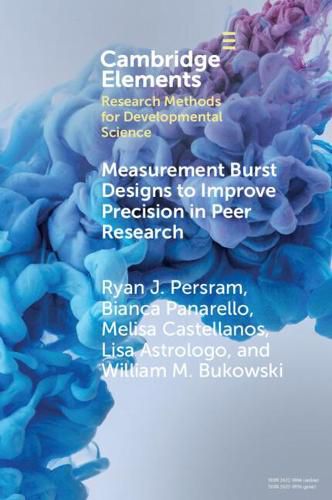Readings Newsletter
Become a Readings Member to make your shopping experience even easier.
Sign in or sign up for free!
You’re not far away from qualifying for FREE standard shipping within Australia
You’ve qualified for FREE standard shipping within Australia
The cart is loading…






Measurement burst designs, in which assessments of a set of constructs are made at two or more times in quick succession (e.g., within days), can be used as a novel method to improve the stability of basic measures typically used in longitudinal peer research. In this Element, we hypothesized that the stabilities for adolescent-reported peer acceptance, anxiety, and self-concept would be stronger when using the measurement burst approach versus the single time observation. Participants included youth between 10 and 13 years old who completed (a) sociometric assessments of acceptance, and measures of (b) social and test anxiety, and © self-concept across three times with two assessments made at each burst. Findings broadly showed that the stabilities were significantly stronger with the measurement burst when compared to the single time assessment, supporting our main hypothesis. We discuss the utility of the measurement burst in a broader context and considerations for researchers.
$9.00 standard shipping within Australia
FREE standard shipping within Australia for orders over $100.00
Express & International shipping calculated at checkout
Measurement burst designs, in which assessments of a set of constructs are made at two or more times in quick succession (e.g., within days), can be used as a novel method to improve the stability of basic measures typically used in longitudinal peer research. In this Element, we hypothesized that the stabilities for adolescent-reported peer acceptance, anxiety, and self-concept would be stronger when using the measurement burst approach versus the single time observation. Participants included youth between 10 and 13 years old who completed (a) sociometric assessments of acceptance, and measures of (b) social and test anxiety, and © self-concept across three times with two assessments made at each burst. Findings broadly showed that the stabilities were significantly stronger with the measurement burst when compared to the single time assessment, supporting our main hypothesis. We discuss the utility of the measurement burst in a broader context and considerations for researchers.